
Steve The Intern
1000 miles on Campagnolo Ekar
- ,
- , Uncategorized
Before 2021 I had really only ever had one singular ride on Campagnolo components. It was during a cyclocross race in Portland, Oregon more than a decade ago. My bike was disabled with a flat tire so a friend lent me his Campy equipped steed for my race. Having spent the majority of my drop bar riding life on Shimano components the instant transition to this new Italian groupset was quite jarring. In short: I just couldn’t get the shifting right. The Campagnolo controls were somewhat reversed from the Shimano controls that I was used to, so throughout the race I repeatedly went to shift to an easier ratio for a hill, but instead the reversed controls had exactly the opposite effect: I dropped into a more difficult gear and stalled out. It wasn’t a pleasant experience. It wasn’t love at first sight and there weren’t any immediate plans to try Campagnolo again any time soon.
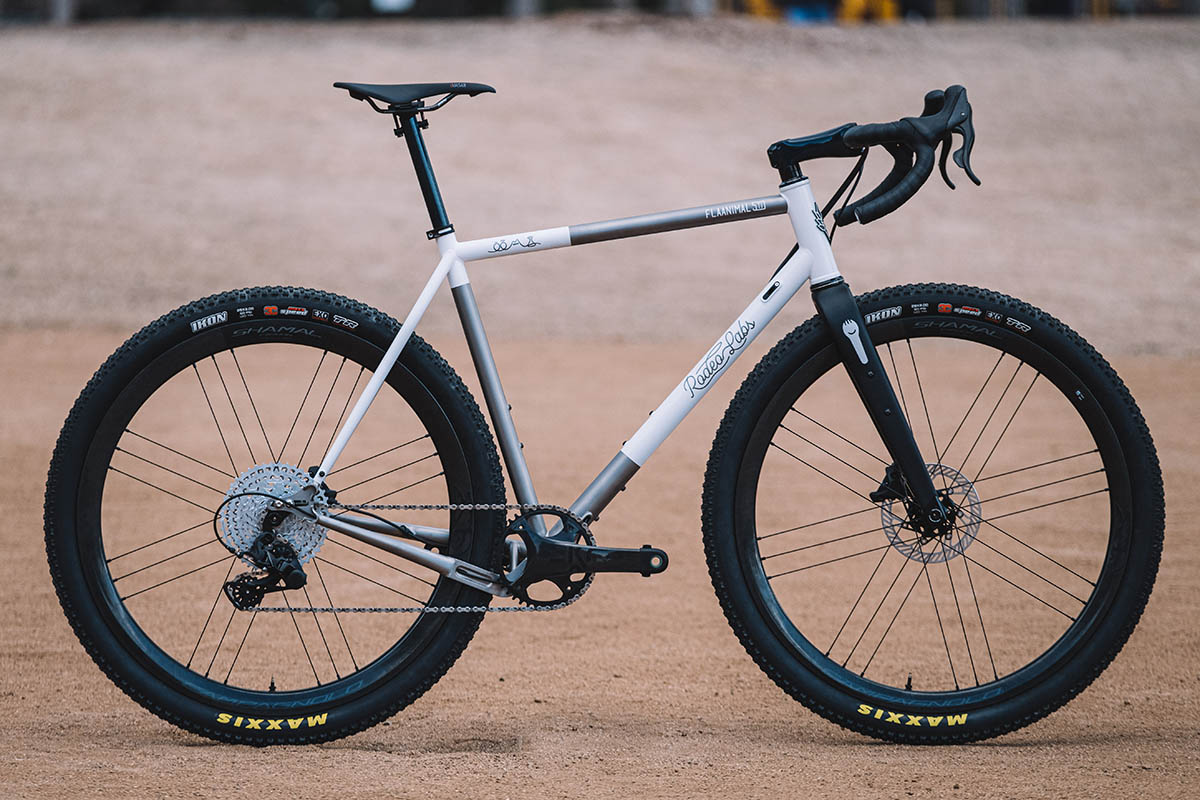
Throughout Rodeo’s existence we built a few Campagnolo drivetrain bikes here and there but the existing groupsets they made weren’t really well adapted for gravel riding (or even disc brakes initially). Furthermore the EPS electronic shifting that Campy offers had wire connectors that were too large to fit the routing ports on our Traildonkey frame. This is something I found out via a lawsuit threat from a very angry customer who couldn’t install the groupset on the frame he had just purchased. And therein lies a larger problem with Campagnolo that I’ve noted over the years: The people who ride it I’ve generally found to be cut from a different cloth, a more upscale, more exclusive, less nice cloth if I’m being brutally honest. Lets face it, despite it releasing less expensive groups over the years the Campy foothold in the United States market seems to be at the higher end of the market. The brand feels more Ferrari than… I don’t know… maybe the Subaru rally car that I would rather drive most of the time. We as cyclists buy bikes and bike parts, but many of us are buying more than the bike or the parts, we’re buying into the larger brand. There are plenty of cycling brands that make phenomenal products that I will never buy because the brand vibe or culture simply doesn’t represent what I want to associate with as a customer. I had put Campagnolo in that bucket.
So that was that. Campy was fine, but it wasn’t me, and there was zero chance it was going on any of my bikes because there was always going to be a brand with a groupset that was functionally superior and if not superior then at least the parts were probably less expensive and were something I was more familiar with. Scusami Campy, it just wasn’t meant to be.
Or was it?
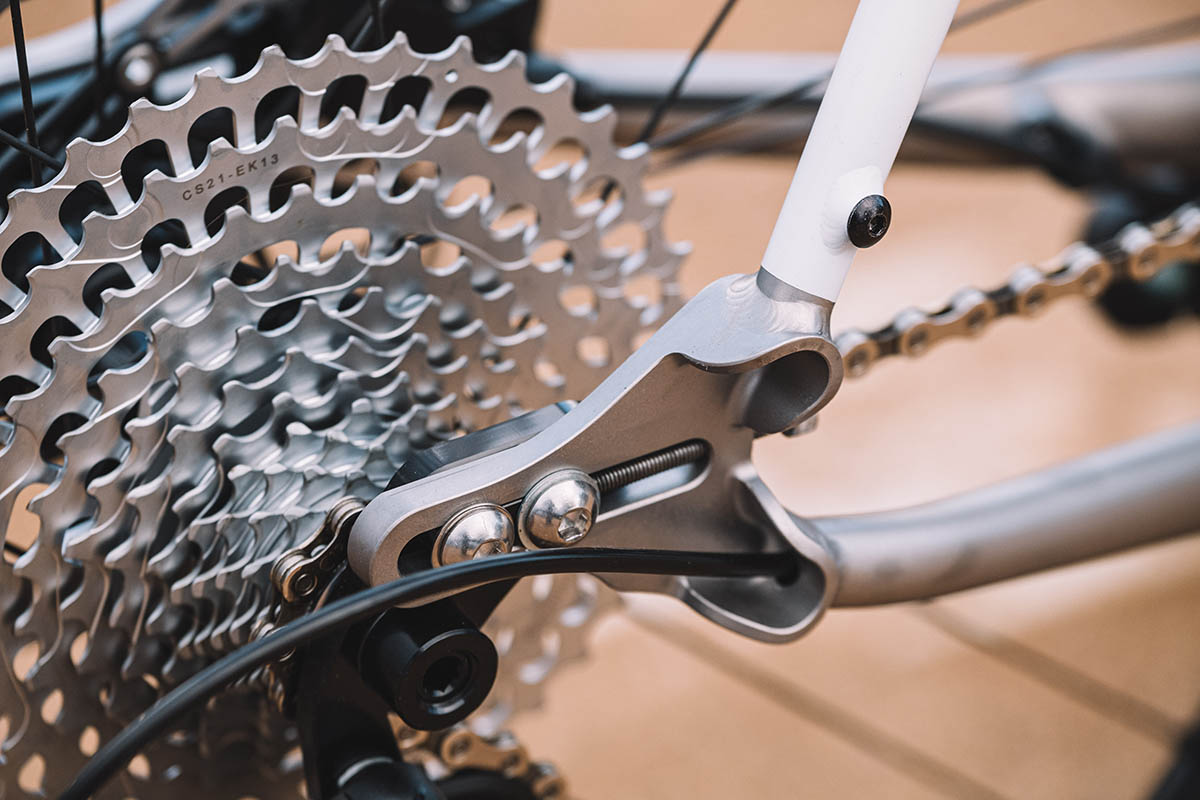
Late in 2019 an email dropped into my inbox. It was from a product manager at Campagnolo who wanted to show us something new that they were working on. They were not liberal with sharing details, but since Rodeo is a pretty off road / gravel centric brand I could only assume that Campagnolo was working on a groupset specifically tailored to the gravel genre. At the time I may have been harboring a number of personal brand biases against Campy, but I’m a gear nerd just as much as anyone, so when the opportunity to learn about what is coming next presents itself to me there is absolutely no way I’m going to say no. All that stuff I said about Campy being too much of a Ferrari brand? Who cares! Show me the new stuff.
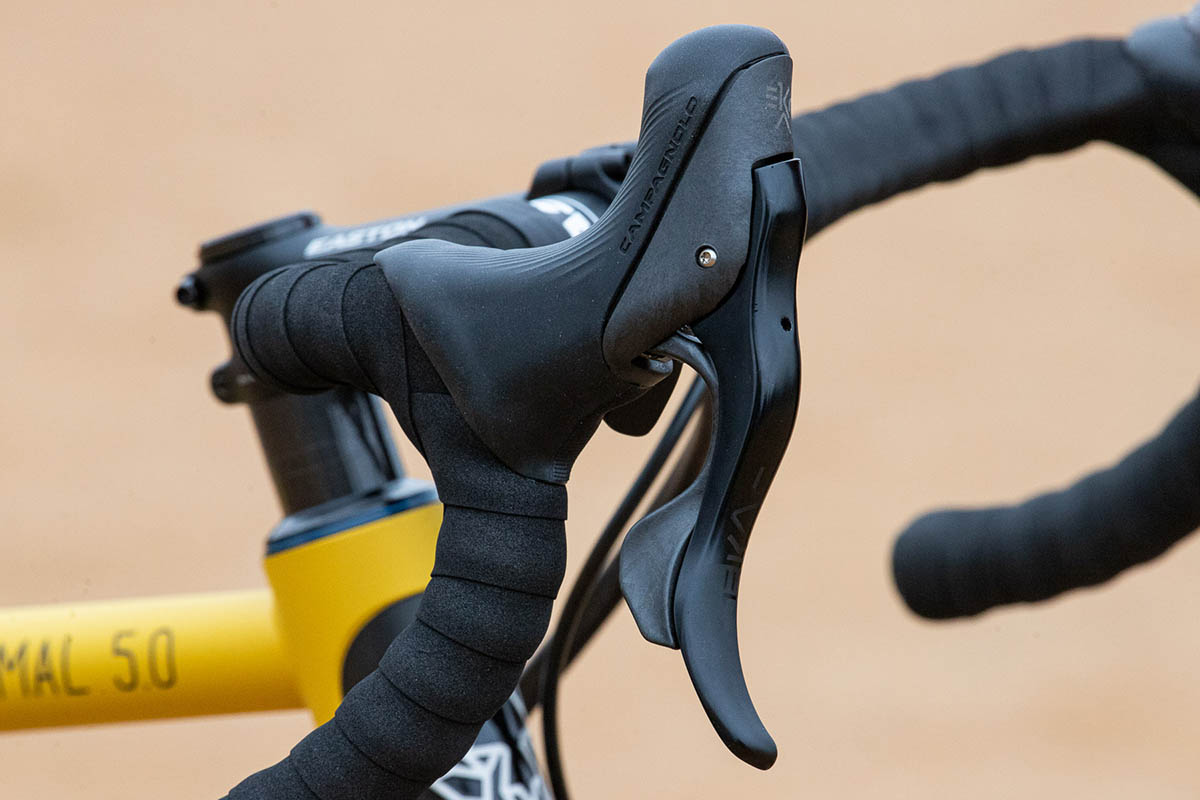
We set up a call and Campagnolo did show us the new stuff. At the time everything was still in development, nothing was 100% final. But what they did show us was intriguing and appeared to be really well thought out. Speaking to the product manager I got the sense that there was palpable passion behind the product. This wasn’t a badge engineering exercise where some new stickers were applied to some warmed over old parts, these were entirely new parts being developed by people who deeply cared about function, and most importantly to me the designers were bike riders who were taking their real riding experiences and weaving them into what they thought the groupset should be. Something else stood out to me: The people on the other end of the Skype call were downright nice. My biases told me that if I spoke to someone at Campagnolo I would get the vibe of someone from an exotic car dealership – the slightly upturned nose, the emphasis on history and cachet. But what I found on the other end of the call were bona fide bike nerds. They were excited about what they were working on and to my absolute surprise they wanted to know what we thought of it. Think about that for a second: Campagnolo, the venerated bicycle component manufacturer founded in 1933, home to no less than 33 Tour De France victories, was talking to this microscopic Colorado bike company with only the most vanishing brand history. Furthermore they were asking us what we thought about their upcoming groupset. I checked myself. Were we victims of some sort of charm offensive? What did they want from us? What could we possibly offer them? Rodeo is so small. We don’t matter. And yet here we were having a really interesting conversation with some fellow bike nerds in Italy about drivetrains, gear ratios, and bottom bracket seals. This was all quite cool to me, and it felt very genuine. Perhaps some of my preconceptions about the brand had been unfair?

Months later Rodeo received an invite from Campagnolo USA to fly to California and test ride pre-production groupset. By now we knew the name for the whole system was to be called Ekar 13, and we were keen to get some seat time, gravel time, road time, and trail time on it. As luck would have it the Italian Bike Parts Fun Trip was scheduled exactly when I was to be in Morocco at AMR, so I was unable to attend. Not a problem though as Drew and Sheldon here from The Lab were both able to go, and as lead mechanic and lead product development guy around here Sheldon and Drew more than have the chops to decide if this groupset was in fact any good. Drew and Sheldon rode the groups for 2-3 days and reported back: There were some quirks but Campagnolo was off to a great start with the pre production groupsets and there were plans for further refinement of some of the details before the parts hit the market.
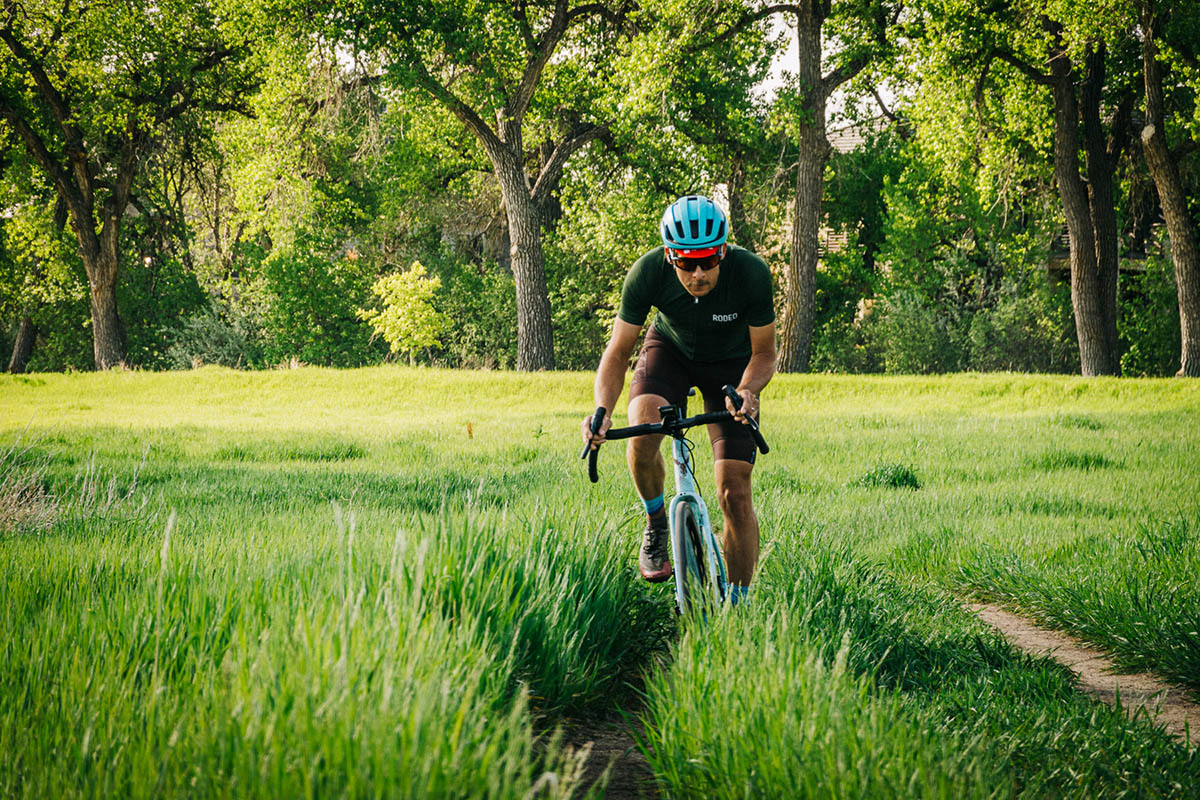
I think it’s important to pause here and note that the philosophy I have for building custom bikes at Rodeo is that we simply don’t recommend anything unless we’ve ridden it and we like it. Period. Everything we do here has to trace back to the riding. It isn’t about cachet, incentives, price, or relationships around here: If a product sucks we’re going to go out of the way to make sure it doesn’t end up on your bike even if you ask for it by name. This philosophy works because Rodeo is a company built and run by bike riders. Everyone here rides, and everyone here wants to build bikes that ride well. For us to be interested in Ekar for our bikes, it, as a baseline simply had to be good. It doesn’t have to be the best groupset ever made, but it does have to be good. From what we could tell during the test rides the groupset was good enough that we reserved a modest quantity so that we could have an allocation at launch. We were confident that even if the groupset wasn’t a perfect fit for everyone it would be a perfect fit for enough people that we should add it to our offerings.

Months passed and the group was finally publicly announced. It had all of that well orchestrated buzz that big brands have when they unveil something new. The press reviews looked good, and Ekar was officially an option for gravel cyclists worldwide. On the Rodeo side we had not received any groupsets yet, and even when we finally did we were very limited in which wheels we could build with because the new Ekar N3W freehub body was only really found on Campagnolo Shamal wheels. Shamal wheels are great, but they are pre built as a system of rim, hub, and spoke. A lot of custom bike clients want to pick rim, hub, and spoke separately so we were limited to building those initial bikes with the good-but-not-customizable Shamal wheels. During this time I still hadn’t ridden a single mile on the groupset but I did dip into our pre-order allocation and earmark a groupset for me. Eventually I would get a groupset to ride and test, and eventually we would be able to get N3W freehub bodies for our standard Rodeo (Bitex) hubs so that I could use the group with my existing fleet of wheelsets and tires.
Initial customer deliveries of the groupset were good. Some customers had chosen it because they knew the brand and welcomed the ability to now run Campy on their gravel bike. Other customers had no idea about the groupset but simply took our word for it when we told them that it was light, sexy, had crispy shifts, great brakes, and worked as advertised. To this day I’ve heard no negative feedback from any customer of ours about Ekar. We all know how much people love to complain, so I took this lack of complaining as a good sign while I still waited for my chance to ride the group for myself. I ultimately don’t really care what anybody else tells me about bike parts, I want to ride any given part for myself and decide for myself if I think it is good. I may own a bike company now and it is true that Rodeo builds me whatever build spec I want to ride as a part of my role in the company, but as someone who grew up quite poor and bought almost every single bike part I’ve ever ridden since about age 12, I’ll never forget the pressure I felt to make every dollar of every purchase count when I finally decided which parts to build my own personal bike with. I remember in my 20s scraping enough money together to build a then-new Sram Red 10 speed drivetrain, but as parts broke or wore out on that bike I just couldn’t justify the money to keep the bike Red and slowly downgraded things to the more reasonable Force or Rival parts.
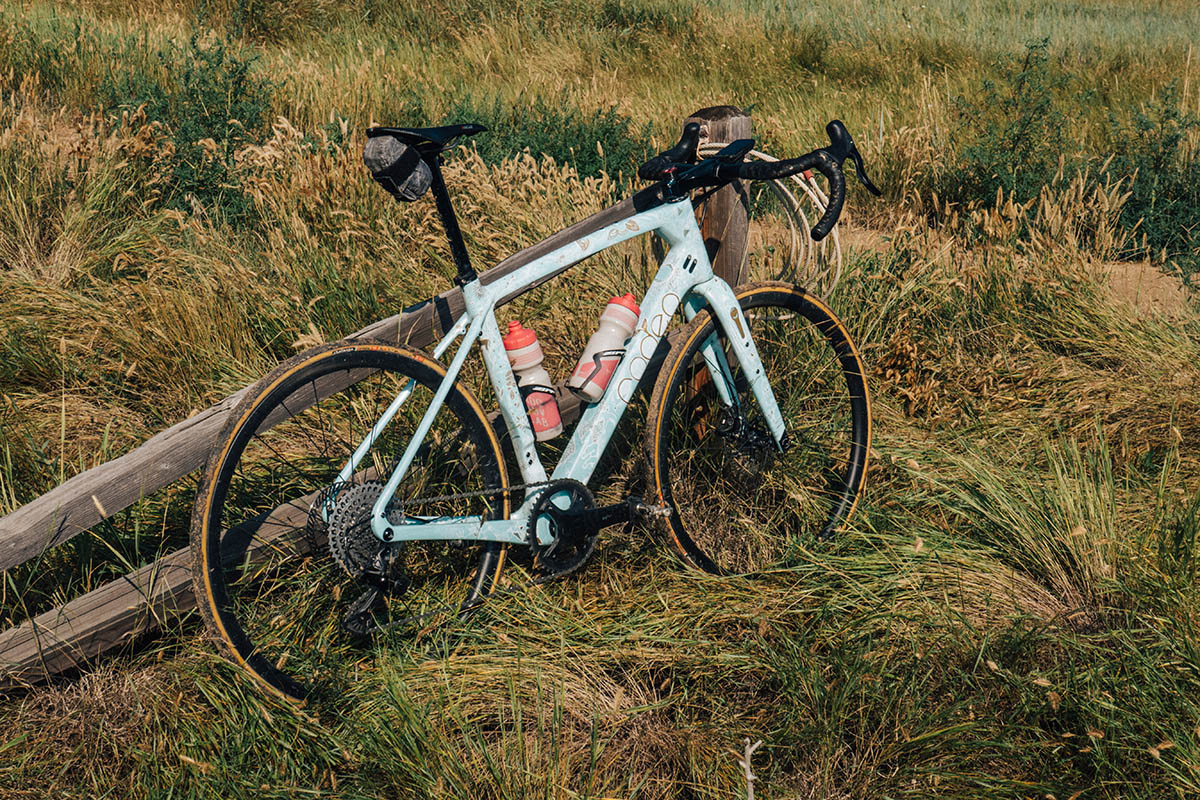
Eventually my turn to ride Ekar arrived. My groupset arrived, my freehub body arrived and, as luck would have it an old Prototype Traildonkey 3 that I had refurbished with a lovely new coat of paint arrived each in quick succession. I already had my tan and orange Traildonkey that I raced in Morocco with 11 speed Di2 1x, I already had my steel Flaanimal 5.0 also with Di2 1x, and I also had my brand new Flaanimal Ti with a Force + Ratio 12 speed mullet 1x build. When the question of how to build this next Donkey came up I decided to make this one my light, fast, forever Donkey. Ekar claims to be the lightest production gravel groupset on the market so that helped. For cockpit I swiped some ultra high end Beast Components handlebars and seatpost that were take-offs from the Flaanimal Ti launch. For the saddle I used the also-Italian Quasar which even with stainless steel rails weighs about 165 grams. For wheels I had Steve at Magnetic lace up some ultralight 24 spoke straight pull hubs to our standard Rodeo 700c carbon rim via Pillar X-Tra triple butted bladed spokes. I think those weigh 1420 grams so I knew that they would get up and go when rides got punchy. Yes, this was going to be my quick-like-Donkey build. I wouldn’t use this bike for alpine logging road brutality, mountain bike trolling, or even crash prone gravel racing. This was my fast gravel, good-times, pavement group ride, ride all day solo Donkey. Being the confessed bike nerd, I was giddy with excitement.
The first ride on the new bike was downright sublime. There wasn’t any one thing that stood out, the bike was just quiet, quick, and smooth. I’m well aware of the new parts placebo affect and if I was feeling it I was fine with that. I was also aware that most of the bikes that I had been riding so far in 2021 had much fatter, knobbier tires and more piggly build specs – not that there’s anything wrong with that. It was nice to be on a bike that was downright un-laden and not built to ride up boulder strewn walls. This bike even had 28mm road tires and I kid you not they were so skinny looking that for the first few blocks of the ride I thought that I was going to tip over every time I looked down. Rough Road Donkey, if that is what this bike was, was dreamy.
But let’s talk about Ekar again for a second. You know what wasn’t dreamy for the first miles of the ride? The brakes. I grabbed two fistfulls of brake levers as I descended to the street from the office and into an intersection and I as I pulled those levers feel like the brakes just responded with a laugh and a shrug. The brakes barely worked. I noted this to myself for obvious reasons, but had I also expected this because Sheldon had been riding Ekar on his personal Flaanimal for a month or two before me and had related that the brakes would be horriffically bad UNTIL the pads bedded into the rotors. I’m here to confirm that this was an accurate statement. If you are coming from Shimano or Sram brakes this might be a bit of a new concept. Shimano and Sram brakes also need to bed in, but the feel of the brakes before / after bedding is far less dramatic with those brakes. Instead of being upset I did chose to withhold judgement on the Ekar brakes until I felt they’d had their chance to break in.
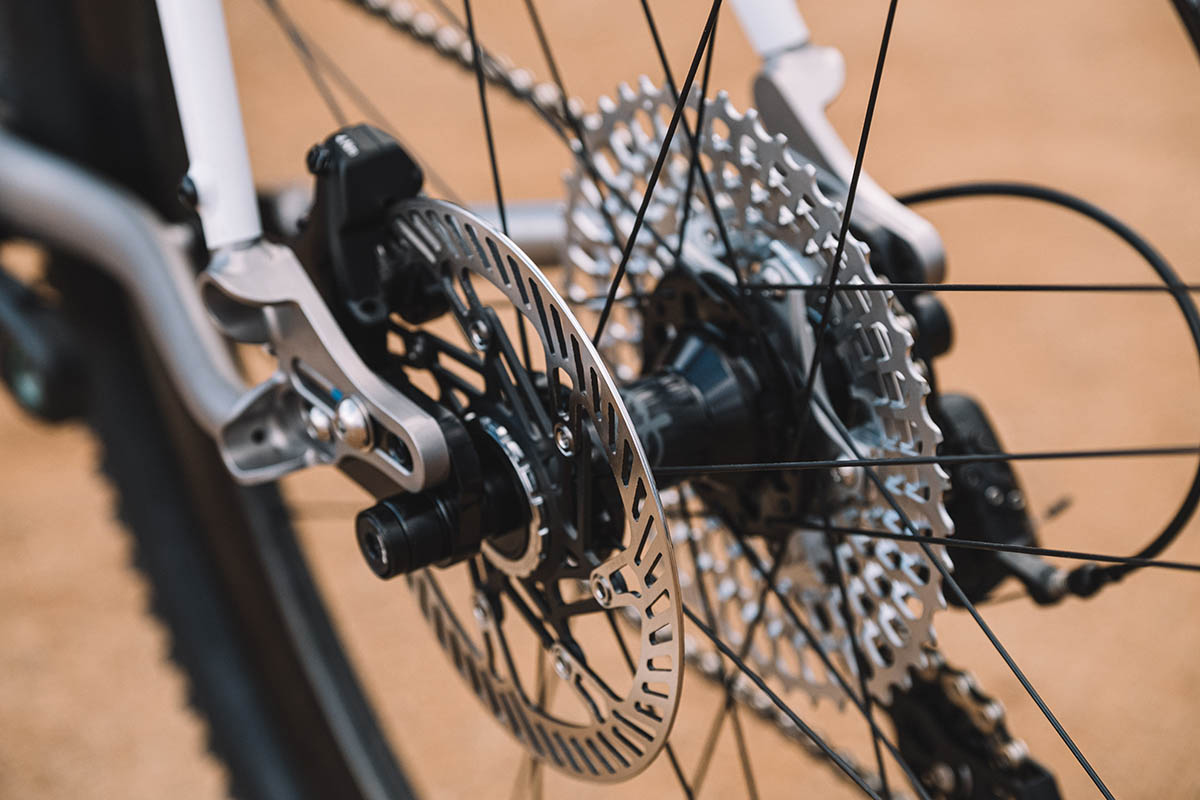
The first miles of the first ride involved a lot of smooth road climbing and I felt like I was on a smooth road bike. I had wondered to myself if I would be able to perceive the increase in gears that Ekar has (13) over what Shimano Di2 offered (11). I am not one of those riders with a precious focus on maintaining exact cadence. Typically those riders prefer 2x drivetrains over 1x drivetrains because the shifts are much smaller if you have twice the gears. I’m more of the type of rider who is simply happy if the moment arrives that I need an easier or more difficult gear, I push the shift button, and that gear materializes in some shape or form. Cadence be dammed. It was definitely a surprise then that Ekar gear jumps were noticeably smoother to me than 11 speed jumps. “Wow” I thought, “That’s actually pretty nice”. Maybe cadence divas are on to something?
Up the hill I went. I made some more notes to self: Ekar upshifts take almost no effort or lever throw. This isn’t Shimano or Sram, it’s something else. The amount of push I was used to from those systems is too much for Ekar so I found myself over shifting. Instead of one gear I would shift two, or worse I would shift 1.5 gears and briefly land in no-man’s-land gear hell. This was going to take some learning, I thought to myself. Downshifts though… Ekar downshifts are the opposite of the upshift. If the upshift is light and airy the downshift is a thunder crack of absoluteness. BOOM BOOM BOOM. You can’t downshift wrong with Ekar, and when you do downshift the sensation is utterly assured and precise. I think my initial impression is that it was a bit excessive of a clicky feel, but this was the first ride after all. Since these first rides I’ve discussed my impressions with other Campy riders and they universally respond with “yep, that’s the Campy feel”.
As I continued to climb I ran into my first and only true gripe with the groupset: The shift up lever would catch on the brake lever after most shifts and hang there. For a while I didn’t know this was happening but when I went to downshift the shift ratchet from the upshift remained engaged and prevented me from downshifting. Honestly this caused me a bit of a panic because I quickly realized that with each upshift I had about a 50% chance of not being able to downshift back down later if the lever was hung up. The odds stated that eventually I was going to end up stuck in my granny gear and that did in fact happen for a minute or two until I stopped to investigate. I found the cause of the problem with the lever catching and it was easy to un-hook it with my index finger and keep shifting as intended after that. Still, this was not acceptable. If Ekar is the Ferrari gravel groupset then I expected precise sequential gearbox shifting not worn out clutch busted manual shifting. The issue would be investigated later.
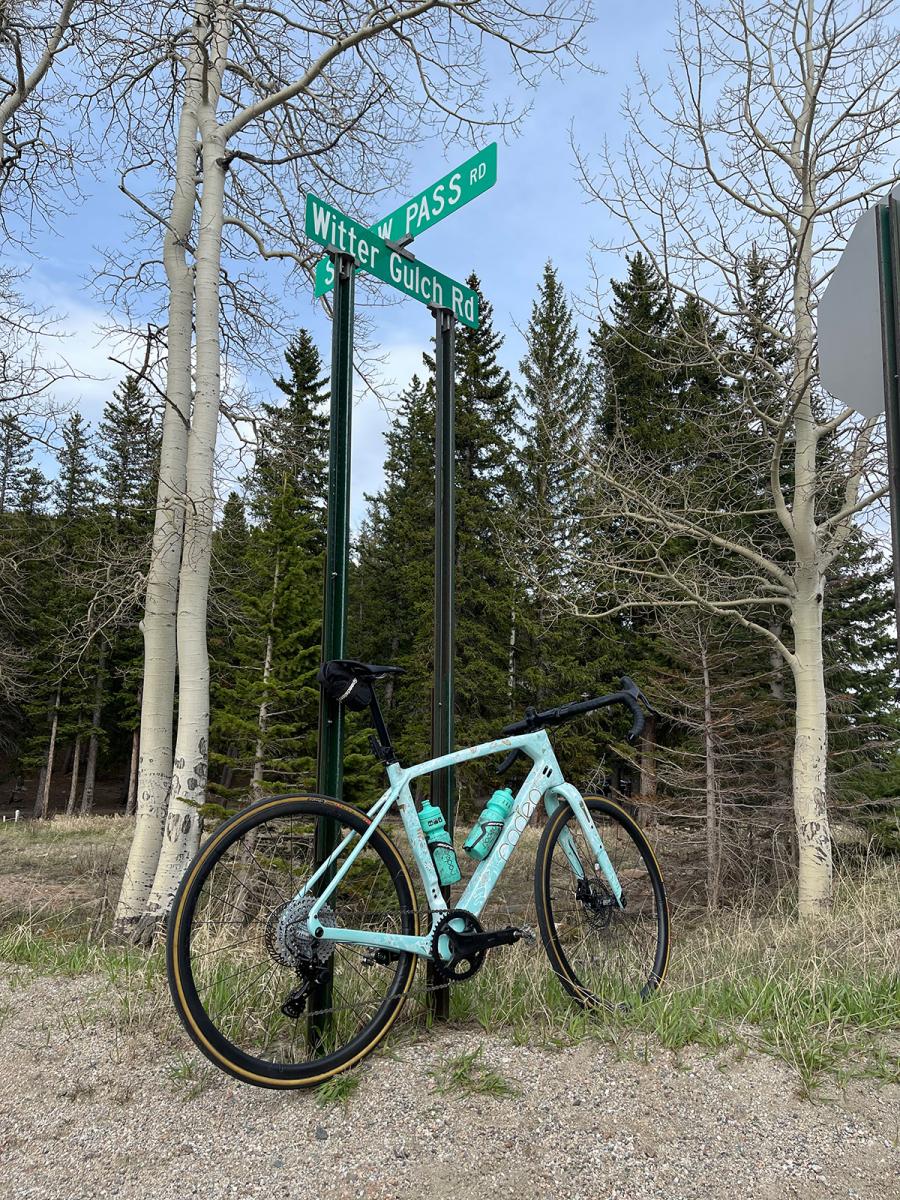
I topped out near 10,000 feet and dropped into what I knew was an incredible reward for my efforts: The roller coaster switchbacks of Evergreen’s Witter Gulch. Whitter Gulch is one of the more dramatic roads to descent within close proximity to Denver. I think there are 15 or more ultra tight and steep switchbacks that must be navigated on the way up or down. More than once while descending Whitter I’ve blown right through a switchback because I’ve mis-judged just how tight and steep the turns really are. This I thought to myself was a perfect test of Ekar’s breaking. If the pads weren’t bedded in when I left the office they would most certainly be once I reached the bottom of the serpentine descent. I went into turn one cautiously and I still felt the newness of the brakes. They worked better than they had at first but they still weren’t Shimano or even Sram good. A few switchbacks later they were heating up and I felt the grip steadily increasing. Performance was improving. The lower I went the better the brakes got until I finally hit the point where I knew I must be experiencing what Campagnolo was bragging about when they say they have the best brakes in the business. I always took that claim with incredible skepticism. How could anyone be better than Shimano? But Ekar’s brakes are better. I could feel it, and it felt like no other brakes I’ve squeezed. Not only was there plenty of pad / rotor grip but there was something I had never experienced: Modulation. To me brakes are either on or off, and disc brakes more so than rim brakes. I’d experienced so little modulation in my life that if you asked me what good modulation felt like I wouldn’t be able to even describe it. Is modulation firm? Is it squishy? What is it? Well, thanks to Ekar I now know what modulation is… it’s delicious. Modulation is control, but on an intuitive level. Modulation is you pulling the lever and getting some engagement but as you pull more you get more engagement with incredible precision. Modulation is your brakes feeling exactly like you want them to, and that is different than the feel you get when an engineer at Shimano or Sram decides how your brakes should feel. Modulation is sexy. Ekar is modulation. It’s hard to have a fresh experience on a bike part these days. Most bikes and bike parts are about as good as each other anymore. For something to stand out it really has to be dramatically better than its competition. Ekar brakes are better. Ekar brakes stand out.
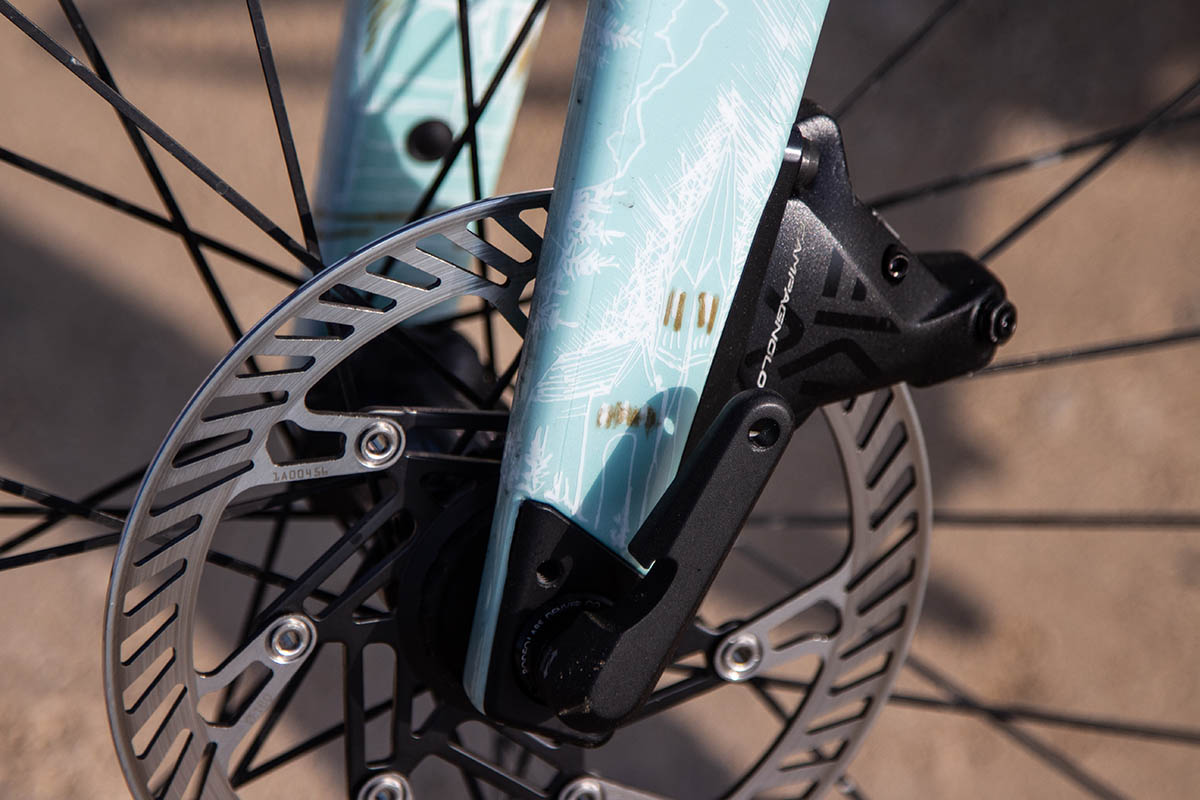
By the end of the first ride I was cautiously optimistic but didn’t have any radical conclusions about Ekar. It seemed good. It feels sturdy. It looks gorgeous. It works. The brakes are life changing. The shift levers had a weird problem.

At this point I made a resolution with myself. I wasn’t going to share any real conclusions about Ekar until I’d ridden it for 1000 miles or more. If this groupset was good or bad or brilliant or unremarkable it was going to take some time for me to sort out what I really think.
1000 miles later I’m there. Today I finished a ride on the Ekar Donkey and said to myself “Ok, my thoughts are collected, I know what I think”.
But first let’s talk about the lever getting stuck. I didn’t have a solve for that problem for a couple of months. I had subconsciously adapted to the quirk well enough that it didn’t really bother me much so I didn’t do anything about it. But recently I swapped some emails with Campagnolo about the issue and said point blank “This can’t be how you designed it, you wouldn’t let this out onto the market with this flaw, right?”
As it turned out there was a quick solve. Deep under the lever there is a tiny 1.5mm hex bolt that adjusts the lever throw fore / aft. With a quick adjustment of the lever the issue was entirely solved. I’m happy this is the case because if there weren’t a solve that would have been a gross product bug.
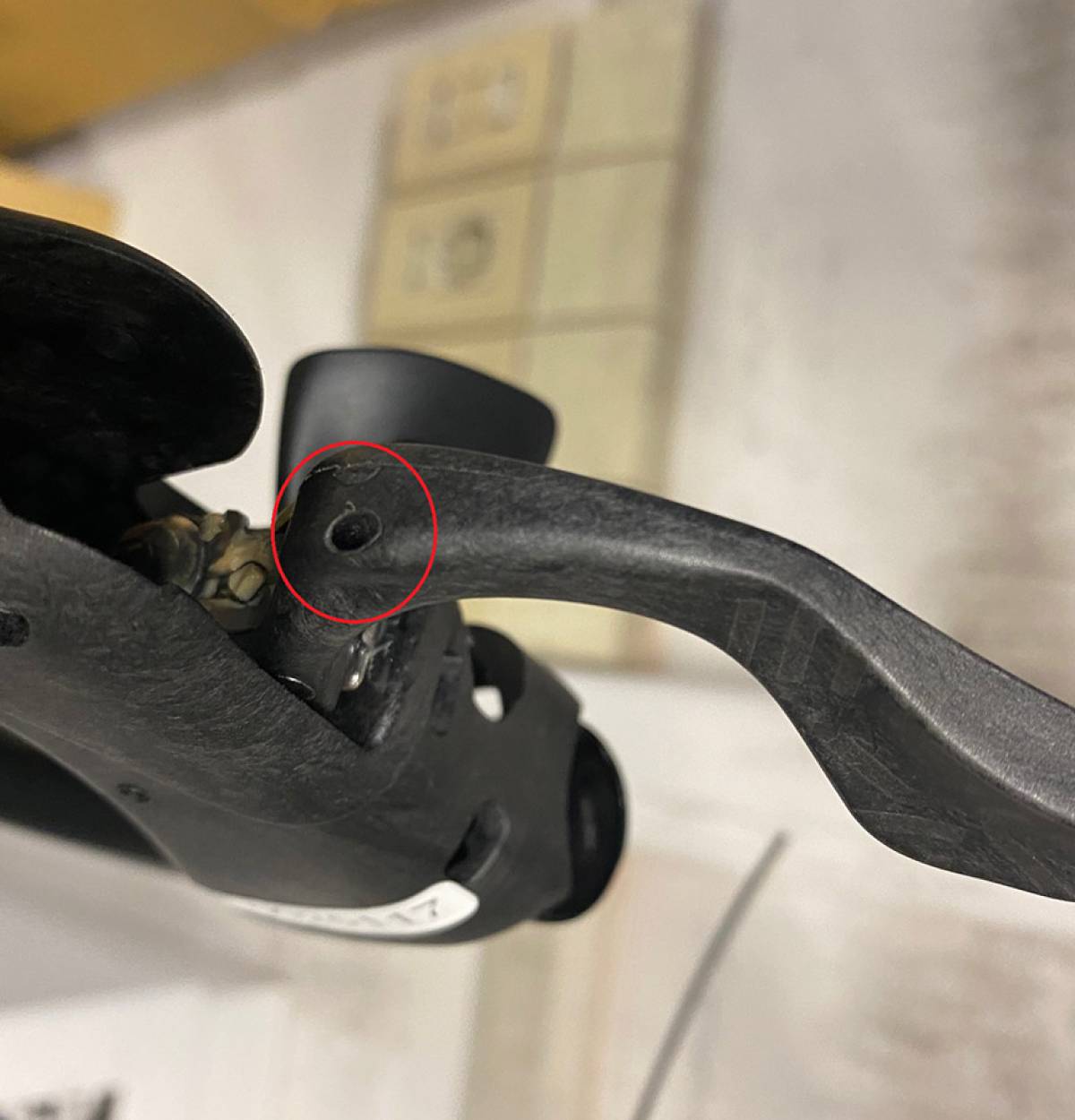
The bike I have Ekar on is my fancy fast light Donkey and I had resolved not to take it gravel racing because it didn’t want to scratch the bike up. But not long after I built the bike I got a last minute entry to Unbound and I knew deep down that one of the best ways to prove a groupset is to take it racing. I couldn’t line up to win Unbound but I could line up to set a respectable time and I expected reliable performance from every component on a bike capable of racing 200 miles. So Ekar went racing with me, and it did pretty well. The first 40 miles of the race shifting was perfection. I never dropped a chain the entire race. But for some reason after mile 40 my shifts felt less precise. I got the click click click of a mal-adjusted shift cable. It was extremely annoying. I know enough about bikes to adjust my own gears so I adjusted the barrel adjuster but the problem didn’t get better. In fact it may have gotten worse. It wasn’t so bad that it was unrideable but it was annoying. I could tell that it was an adjustment issue because I could feather the shift lever and make the drivetrain noise stop. The cable was new enough that the entire situation may have been caused by simple cable stretch – something I hadn’t experienced since switching most of my bikes to Di2 years prior. I never solved the shift issue out on the race course but I did finish the race with a respectable time and Ekar didn’t let me down when it counted. I really wished the shifting had been spot on, and later I asked Sheldon to look into what was wrong with the system. Sheldon asked if I had adjusted the barrel adjuster in the right direction and it turned out that I had probably adjusted it in the wrong direction, partly due to my lack of familiarity with Campagnolo adjustments. Once back in Denver we washed the bike, put it into the stand, and had it correctly adjusted within a minute. I wish I could have done that on the race course! Live and learn.
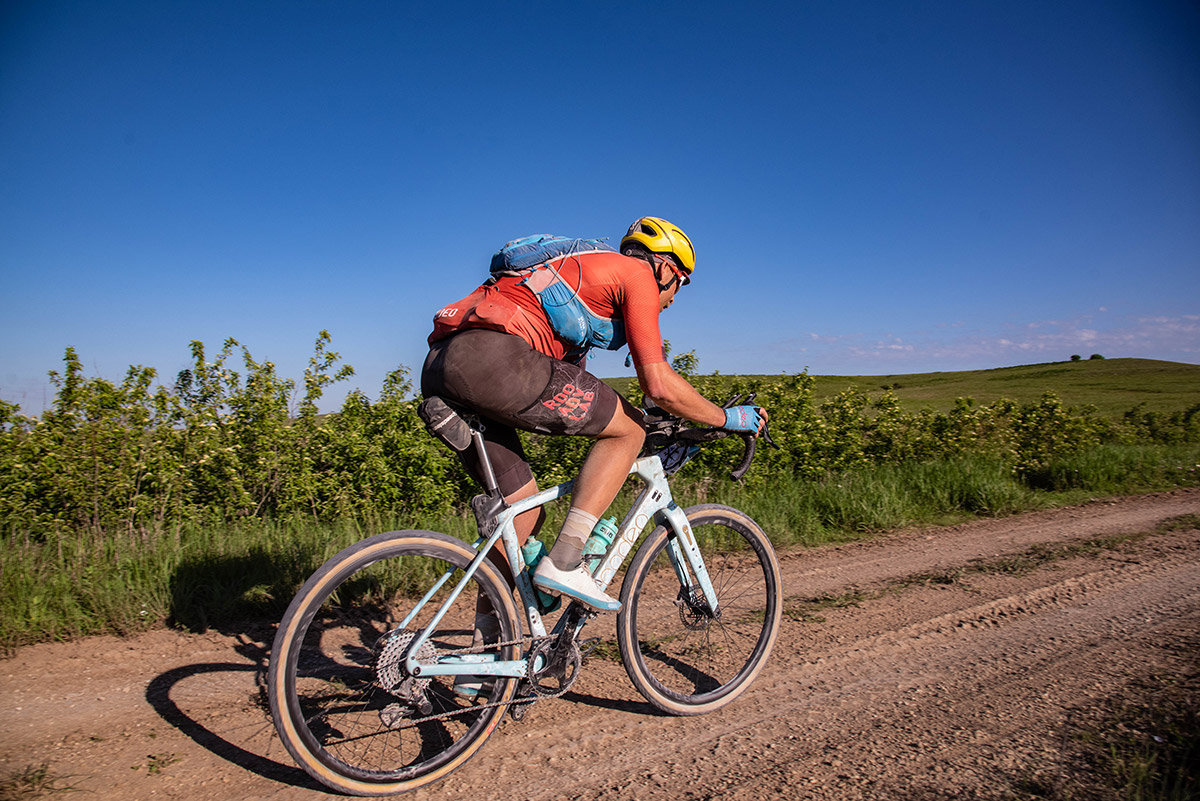

After Unbound the slicks went back on the bike most of the time and I’ve used it more often as my road and dirt road bike than as a rugged gravel bike. The bike has become my go-to steed for the Tuesday, Friday, and Saturday brawl paced group rides where Denver’s finest Cat 5 through Cat 1 cyclists duke it out with vicious attacks and sprints – until we all cry uncle and grab coffee at the end. I love those rides and I love doing them on my Donkey because those rides are the native territory of the pure road bike; the light, aero, stiff machines that we think endow us with superpowers. I like lining my gravel-bike-in-drag up against those bikes just to keep them honest, or at least attempt to. When doing these rides on my GRX / Di2 / Force Mullet bikes I very often run out of gears once we get up above 30mph. This is one of Ekar’s superiorities that I fell in love with: My 9-42 cassette with a 44t chainring up front has been more than capable at keeping up with the fastest road rides I do and more than capable for launching plenty of successful breakaways and sprints. Ekar may be designed for gravel and it does very well at paved roads and town line sprints. It shines because the 13 speeds and crisp downshifts simply feel more at home in road situations than the more primitive feeling 11 speed ratios on my other bikes. I’m not turning into a cadence diva, but I will admit to liking 13 speeds.
One huge attribute of Ekar that I think is most unique to the groupset is shift feel. I did over the miles learn to adapt to the nuances of Ekar lever throw and ergonomics. The groupset feels great in my hands these days. I can’t say that Ekar has the BEST shift feel on the overall market, but it does keep up with its mechanical peers from Shimano and Sram. The elephant in the room / fact of the matter is that electronic shifting is a thing now, and electronic shifting is mind blowingly precise always and every time. Cables don’t stretch. Lever throw doesn’t have to be learned. Micro trims don’t have to be used to encourage a gear ratio to quiet down every now and then. With electronic shifting cables and housing don’t have to be replaced – ever. Electronic shifting is Pandora’s box in that once you’ve tried it you know just how precise shifting can be, and once you’ve tasted that forbidden fruit no mechanical shifting can ever really feel quite that good. But I think the question here is if that is the only measuring stick to measure Ekar by. If it isn’t as good as Di2 or AXS does that make it bad? No it does not. Ekar’s closest peer is GRX which might have slightly more familiar lever feel but much larger gear gaps, or it might be a Force 1 mechanical mullet build (via the Ratio kit) which has 12 speeds and a slightly more familiar lever feel but absolutely gross brakes on my rating scale. Mechanical shifting is good these days, better than it has ever been. It isn’t electronic but not everyone can afford electronic, and not everyone even wants electronic. There is something to be said for not wondering when you last charged your batteries, or why your AXS blip box suddenly failed on day one of your three day bikepacking trip. Mechanical groupsets are far more elemental than electronic groupsets, even if electronic groupsets are truly a joy to shift. If Ekar’s attributes were available in an EPS electronic shifting variant it might well be the best gravel racing groupset out there, period.
I found myself on the group ride in a breakaway this morning. As the pace quickened I started dropping Ekar gears one by one. Click! Click! Click! I had a deep level of confidence that no matter how many times I asked for another gear the cassette was going to give me another one. I wasn’t going to spin out, I wasn’t going to have the wrong cadence, I wasn’t going to mis-shift, and I wasn’t hearing any drivetrain noise. Ekar was humming. When we hit the left hand sweeper as a group I feathered the brake ever so slightly so as not to overlap the rider in front of me. When I sprinted the cranks were stiff, the power transfer just felt right. When I stopped for coffee I looked at the bike and thought. “Damn, that thing is fine”. Ekar is the real deal. It has some quirks. It wins on a few specs, it loses on other specs. You have to learn to shift precisely with it. It isn’t perfect, but it’s good, and it’s I think confident being what it is, not GRX, not Force or Red or Rival. It’s Italian, it’s beautiful, it’s light, it’s different. As a person who never leaves any part on his bike that isn’t up to par I can confidently say the groupset will probably stay with the bike for as long as I ride it. Ekar has earned its place in my stable.
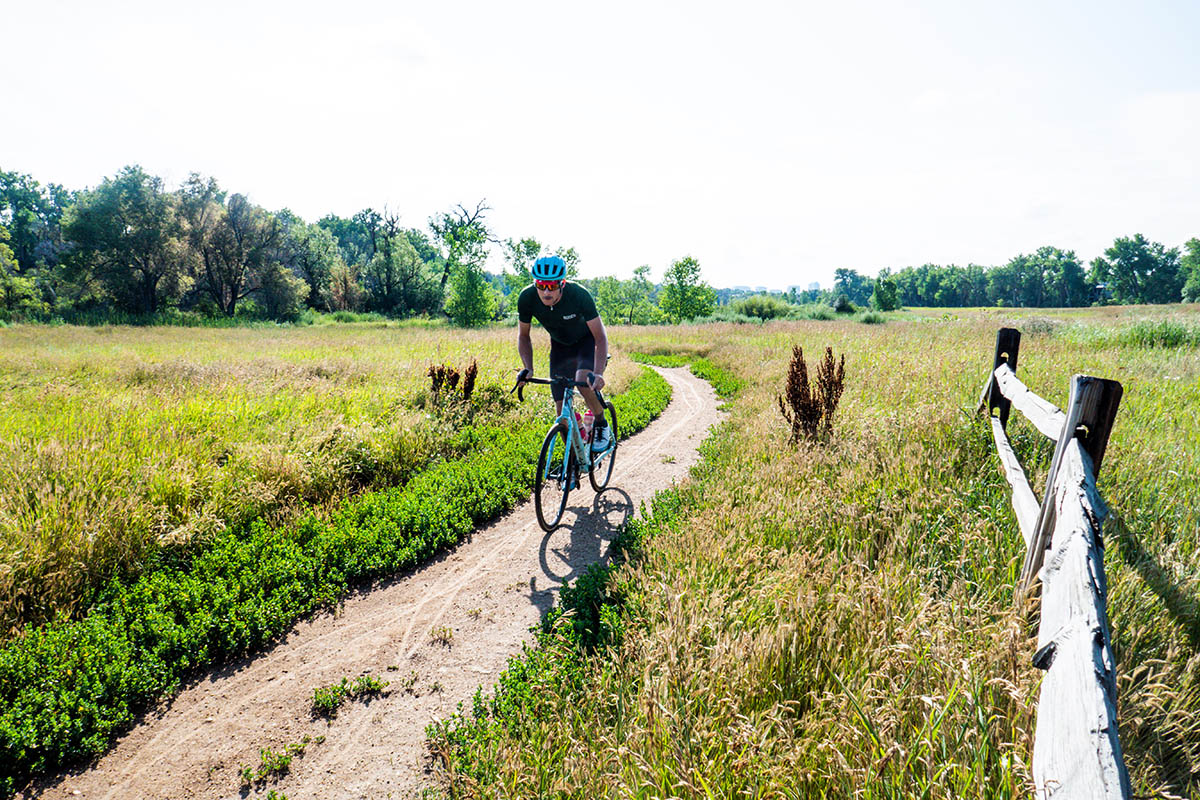
Postscript: I’ve tried to review Ekar in the context of being a mixed terrain gravel racing with-a-side-of-road groupset. Ekar’s available front chainring and rear cassette options don’t as of yet fully qualify it as a loaded bikepacking groupset. I think you could use it for that in rolling terrain, but not on routes with extended steep climbing. I’m hoping Campagnolo or the third party crank / chainring market join the party soon and allow front rings smaller than 38t and also allow for power meter options if that’s what you are into. With those additions to the Ekar uninverse the group will become even more appealing for more riders.



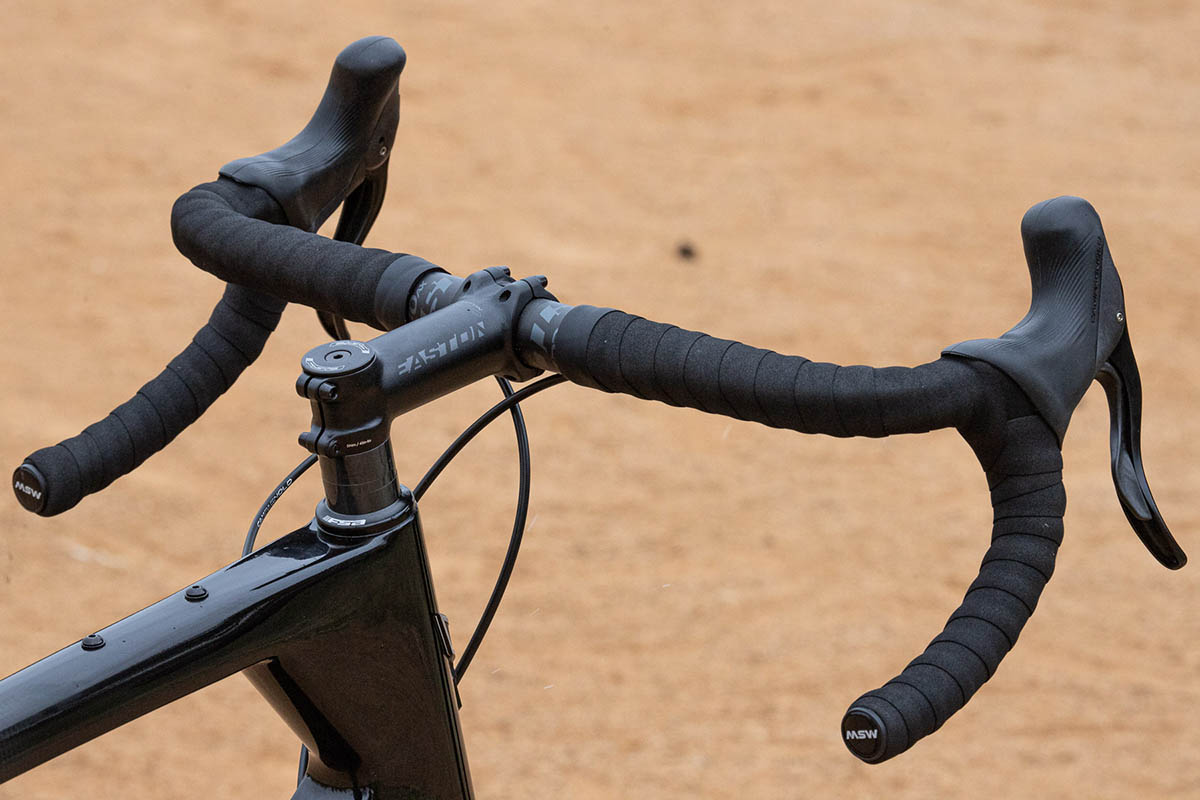
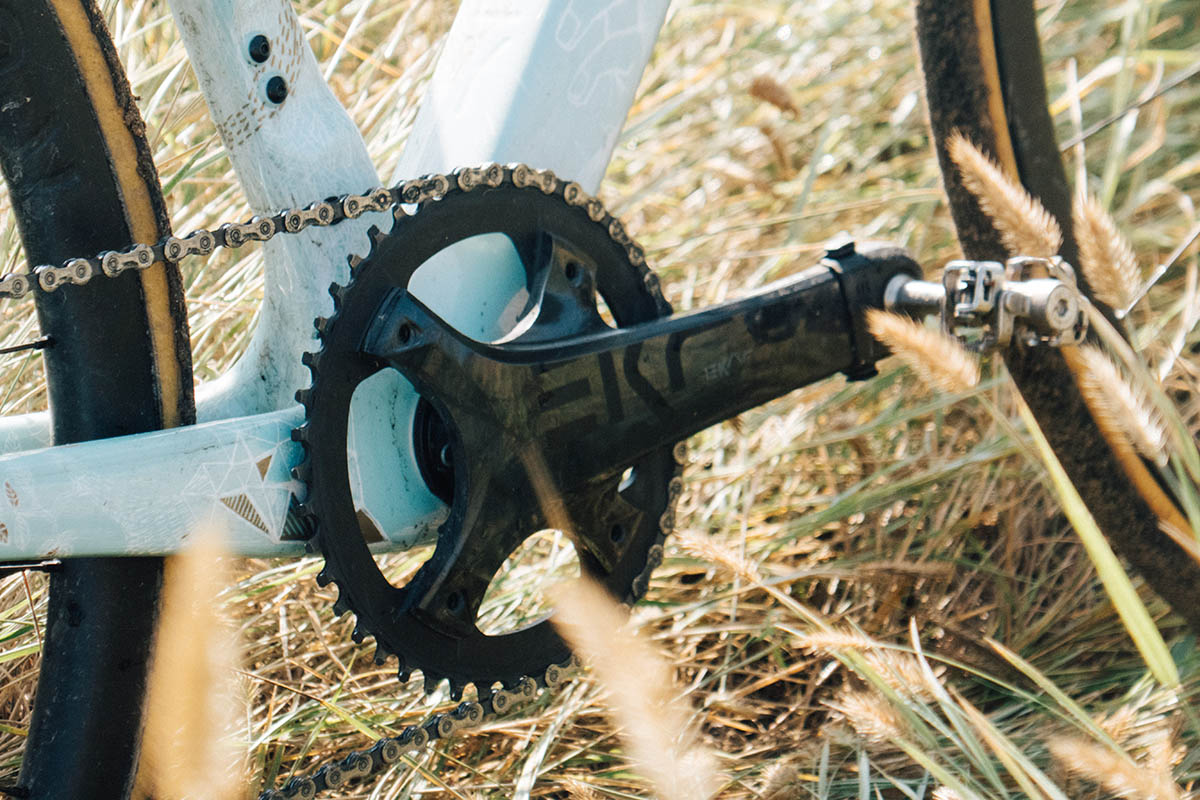
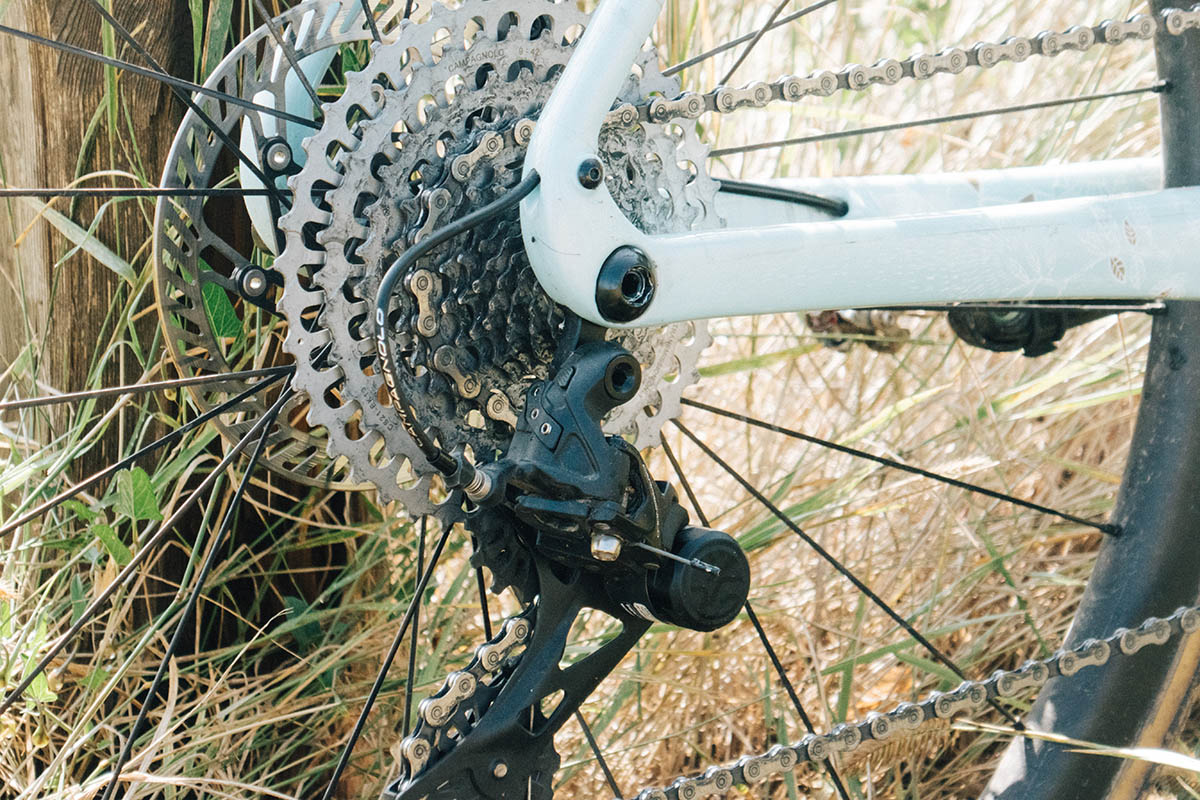
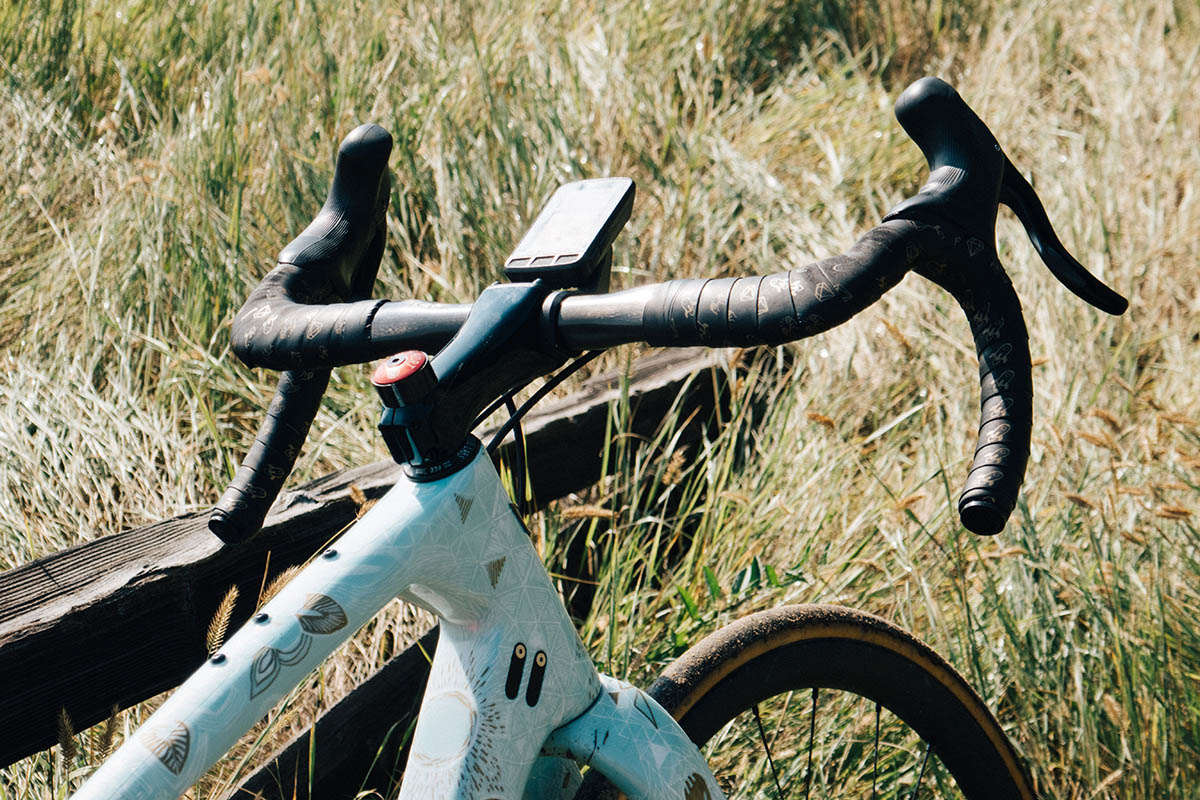
24 Comments
Bought my first Campy Nuovo Record downtube (friction) shifter gears in 1974. There was not a lot of choice back then. Much preferred Campy integrated shifters to Shimano in the 90s so stuck with them on all my road bikes (9 through 12sp — all mechanical). Never disappointed. Yes, more ‘agricultural’, less smooth, more expensive than Shimano et al, but they … just .. work. And fit my hands really well. The multi shift thumb level is a winner. I’m running an Ultegra 2x setup on my gen 1 3T Exploro (this was before GRX). Works OK but hate the bulky shifter body. Will definitely go Ektar one day…when the Shimano stuff dies.
I noticed the shifter issue on my first ride and it bothered me too. I did wonder if I just needed to adjust how the shift lever sits against the brake lever. I’m glad to know it is a quick and easy fix.
Were you able to find that adjustment screw?
Yep, I got it. Thanks.
But why did shifting magically go out 40 miles in? I have been perfecting my ekar build and fighting gremlins. sometimes i feel like if there isnt enough chain lube on my chain then it gets a bit loud and doesnt shift right. This lack of lube seems to come on quick and often, where shimano would have still shifted.
Great read!
I’m still not sure why it went out, if it was magically at mile 40, or if it is just that I started noticing it around then. Mile 40 is when the race calmed down a bit for me as the leaders finally ditched the remainder of us stragglers. As I settled more into hours and hours of riding alone it was definitely easier to hear the bike. So it could have been gradually going out of tune via cable stretch during the intense early miles of the race or maybe a rock smacked my derailleur cage? I’ll never know. Hasn’t happened since. I should have stopped all the way during the race and taken the time to really adjust it correctly, but in races I’m flustered and in a rush. I haven’t experienced the chain lube thing. I use a light oil and wipe my chain down every 2-4 rides out of habit because I’m so tired of filthy chains marking up my hands or calves. A clean bike is a quiet bike I guess.
I found similar issues going from the large sprockets to small until the idler gear was adjusted- this is discussed in the owners manual and is absolutely critical to perfect shifts.
What I am not happy with is the lever modulation- I know about the stupid screw on the from of the lever but this more about hand size than anything else…
It was suggested to me that one can intentionally introduce a small quantity of air into the system in order to give it some “squish”- there is nothing that I can find out about this on the internet when Googled….
Granted, I have only 50 miles on the bike but I did follow standard bedding in practices…. but I am not feeling what I am looking for: something akin to my 11 speed Super Record rim brakes….
What say you?
If Ekar’s hydraulic brakes feel as good as SR11 rim brakes, I’m in.
Stephen, thank you so much for this article. I’ve got about 1500 miles on my ekar groupset and unfortunately have been regretting the decision to use this groupset because of the shifting. I had the same issue that you did with the downshifts getting caught and really appreciate your fix on that, I’m going to play with it today. Did you need to loosen the screw or tighten it? I’ve got a few more issues as well.
First of all and by far the reason I am regretting the purchase is that I have very large hands. When I buy gloves they are always XL or XXL if available. With Ekar I am having the hardest time contorting my fingers to get a good push on the shift lever. This is especially bad when I am in the drops. I have to grab the little shift lever with my finger, pull it toward me and then try to get a shift out of it. Most of the time I just move to the hoods to upshift as it is just too awkward to try and shift from the drops. If I push it with my finger without pulling it toward me my finger catches on the inside of the brake lever. My other issue is downshifting with my thumb from the hoods. I find that you have to pull the palm of your hand backward a little bit and then use the bottom left side of your thumb to push down on the thumb shifter. Unfortunately I am a sweaty dude and I have missed downshifts several times because I don’t get enough grip from the bottom of my thumb. While in the drops the downshifts are easy and precise with my thumbs. I am finding it a major compromise to feel like I have to be in the drops to downshift and on the hoods to upshift. It made me wonder about why I never noticed this with my shimano bikes. I got back on both of them and neither one is an issue as the shift lever is much larger and longer so I can easily reach it whether on the hoods or in the drops.
Another issue I’ve had is losing my chain. I’ve had it drop off the chainring four times now in 1500 miles. Two were under normal riding while downshifting and two were while I was just piddling around with the kids. I assume this one is my chain length so it’s probably my own issue but I measured it as recommended when installing.
The last issue is that I have two or three gears that while upshifting they don’t go right away so I get a half turn of the crank without resistance which really throws off my balance. I’ve been adjusting the heck out of it to try and reduce it but I always get it no matter what I do and I don’t get any drivetrain noise. My next step is to replace the shift cable.
I don’t feel like it’s appropriate to just give my gripes so I have to say I agree about the braking being awesome. The downshifts are very clicky but like you said they are consistent and shift with authority. I’m using the 42T chainring with the 9-42 cassette (for mostly road riding) and I rarely want for more gearing. I can only identify one spot around the 19 mph mark where I wish I had another gear but the benefit of never having to change chainrings is well worth it.
Overall I still regret this purchase, if anyone knows of a way to get a larger shift lever installed it would go a long way for me and possibly push me to the other side.
James,
I’m sorry to hear that Ekar isn’t working well for you. Some of what you describe regarding ergonomics is probably going to boil down to inevitable preferences and ergonomic differences between riders. I can’t say I’ve had the experiences that you’ve had but that doesn’t invalidate the fact that you’ve had them.
It sounds like you may do wrenching on your own bike which is great, but if you get to a dead end on adjusting shifting I would get in touch with a bike shop that is familiar with Campy and see if they can get the groupset to shift the way it should. I do think that the tolerances in 13 speed drivetrains are going to be tighter than 12 or 11 speed so having the system perfectly adjusted and having lines that are perfectly routed is probably quite critical. I really don’t tune the shifting on my own Ekar bike much. If something is off I work with Cameron and Sheldon here at The Lab to use it as a case study of what can go wrong so that we can learn from it. I do think it is worth investigating your housing / routing and checking to see if there are any points of friction that are causing poor or delayed performance.
I’m not sure which way Sheldon adjusted that screw but you’ll know when you get it adjusted in the right direction because it limits the lever travel when adjusted correctly.
You got the up- and downshift wrong, it’s the other way round. Upshift means going to higher speed (so to smaller cogs), downshift is towards slow speed. Nothing to do with direction of pressing the buttons, as it origins from car transmissions.
But very nice article, thanks for sharing the view!
Who cares? You got the idea.
Campy wears in, Shimano wears out.
Thanks for the review. Brakes are very important to me, particularly the ability to modulate the braking level. I have SRAM gears on all my off road bikes but Hope brakes for just that reason. I currently have Campagnolo on all the road bikes. Yes, you do have to know how to keep a Campagnolo drive train adjusted, but the same can be said for SRAM. My fat bike was out of adjustment for one ride, and it was no fun. A quick 10 minutes and it is back to being right as rain.
But brake feel is not so easy to tune in. Your review helped me make the final decision: since I prefer the Campagnolo ergonomics anyway, it will be Ekar on the gravel bike in progress.
Happy to have helped give you some helpful info. Enjoy your new bike!
Just talking brakes, would you take these over Shimano? I am riding 1x Force but am looking at changing the groupset. I just can’t stand the brakes. So it’s either GRX Di2 or Ekar mechanical.
After 1000 miles… how’s the wear on the chain and cassette?
Steve,
Thank you for this (most helpfull) review… I‘m a Campi driver for roughly 30 years… I very much prefer the looks and feel of the Campi shifting parts… And I‘m not a fan of electric shifting – even if I have to admit that it is sexy and precise…
For me things must have their specific way how things will be done and handled… And for bikes – this means – that there is no electro-mechanic component on board… Which brings me to brakes… Brakes are IMHO the single most important piece of equipment on any of my bikes… And I not only judge them for their raw power – but also for their modulation… Which brings me to the point where I have to tell you that I have put a Shimano Louise 4 piston fixed caliper system on my very light x-country mountain bike… Not just because of the superior braking action… but mostly – for their superior modulation.
This being said – it is clear that I will equip my gravel actually in commissioning – with an Ektar group… Campi simply rules…
For those interested in a bit more gear…I ran into this…not sure how it works but I may investigate..
https://www.brackishcycles.com/product-page/campagnolo-ekar-chainring
That is a great find. Thanks for sharing. Ratio Technology also makes Ekar compatible rings. https://ratiotechnology.com/product/ratio-ring-12-13-speed-5-bolt-110-bcd/
When will the Ekar be available in EPS?
Only Campagnolo knows if / when that will happen, but we would LOVE to see that.
wow this saintly however ,I love your enter plus nice pics might be part personss negative love being defrent mind total poeple ,
Hi – just came across this as I’m considering an ekar groupset on a good deal. My main concern was how well it would handle that mix of group road rides and not-too-gnarly gravel (as well as maybe taking over commuting duties). Your review answered that perfectly. Thanks very much! Alan